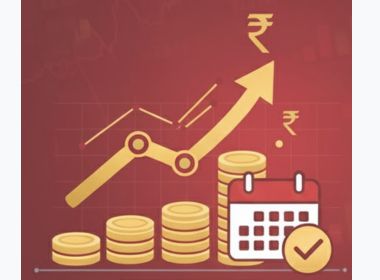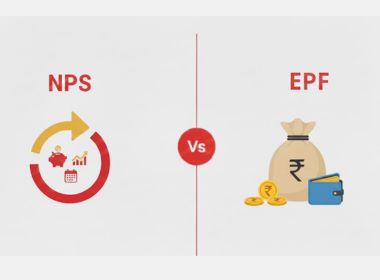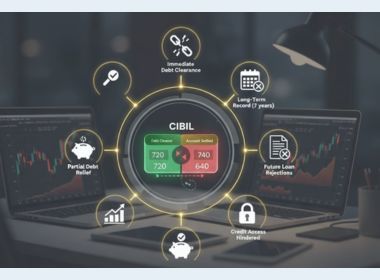Search Suggestions
- Gold Loan
- Money Transfer
- Mutual Funds

MSME Definition and Classification: What Size Business Qualifies for MSME Loan?
In today’s business world, MSME or Micro, Small, and Medium Enterprises are key engines of India’s economic growth. They significantly contribute to job creation, innovation, and the overall development of the country. The MSME sector contributes around 30 per cent to India's GDP and per cent to its exports, while also generating 110 million job opportunities.
Table of Content
- What is MSME?
- Types of MSME
- MSME Classification
- Benefits of Being Classified as MSME
- Classification of MSME As Per Union Budget 2025
- What Do These Changes in MSME Classification Mean?
Despite the importance of MSMEs, they often face challenges due to limited access to resources, making government intervention crucial for their survival and growth. The MSME classification is designed to provide support to these businesses, aimed at fostering growth, encouraging innovation, and creating an ecosystem where MSMEs can flourish.
Here is all you need to know about micro small and medium enterprises (MSME) definition and classification:
What is MSME?
MSME stands for Micro, Small, and Medium Enterprises. These enterprises are involved in the production, manufacturing, and processing of goods and commodities.
Here are the characteristics of MSMEs: Typically small in size, these businesses have low revenue, but it should be noted that low revenue does not translate into lower profitability. They also have a low number of employees and are generally family-owned or operated.
Types of MSME
According to the MSMED Act 2006, there are two MSME types, including:
- Manufacturing Entperises: Businesses that are involved in the manufacturing of goods, as stated under Schedule I of the IDRA 1951, are classified as MSMEs. Also, all businesses that add value to the finished products by using plants and machinery come under MSMEs.
- Service Enterprises: Enterprises that offer services and come under the category of ‘enterprises’ as stated in the MSMED Act are service enterprises and are classified as MSMEs. Please note that individual service providers do not qualify as service enterprises.
MSME Classification
MSME classification is a system for categorizing businesses as micro, small, or medium enterprises. The classification is based on the business’s investment in plant and machinery and annual turnover. Originally governed by the MSMED Act of 2006, the MSME classification criteria have evolved over time to better accommodate modern businesses.
Suggested Read: Step-by-Step Process to Apply for an MSME Loan for Startups
Benefits of Being Classified as MSME
Here are some benefits of being a business classified as MSME:
Access to Credit
- Collateral-Free Loans: Many financial institutions, under government-backed schemes, offer collateral-free loans to MSMEs, allowing them to easily access loans and maintain their cash flow.
- Lower interest rates: MSMEs often get lower interest rates on loans, helping reduce their financial burdens.
Tax Benefits
Businesses under MSME can get several tax benefits, including GST exemption, reduced tax rates under the Income Tax Act, and exceptions under the Startup India Schemes.
Skill Development and Training Programs
The government often offers training and advanced technologies to MSMEs at subsidized rates, enhancing their workforce’s skills, productivity, and overall competitiveness.
Credit Rating and Easier Access to Capital Markets
Being an MSME-classified business improves your credit ratings as banks recognise lower risk in businesses backed by the government, paving the way for further fundraising opportunities.
Protection Against Delayed Payments
To ensure MSMEs maintain healthy cash flow, the MSME Development Act of 2006 mandates buyers, especially larger companies, to pay invoices for supplies from MSMEs within a specific period or face penal interest charges.
Classification of MSME As Per Union Budget 2025
In the Union Budget 2025, the government of India has made significant changes in the MSME classification. They have specifically increased the investment limits by 2.5 times and have doubled the turnover limits.
Here is an overview of the MSME classification criteria as per Union Budget 2025: -
Enterprise Category | Current Investment Limit | Revised Investment Limit | Current Turnover Limit | Revised Turnover Limit |
Micro Enterprise | ₹1 crore | ₹2.5 crore | ₹5 crore | ₹10 crore |
Small Enterprise | ₹10 crore | ₹25 crore | ₹50 crore | ₹100 crore |
Medium Enterprise | ₹50 crore | ₹125 crore | ₹250 crore | ₹500 crore |
What Do These Changes in MSME Classification Mean?
- bMicro Enterprises: Unlike before when the investments were limited to ₹1 crore, micro-enterprises can now invest ₹2.5 crores and earn up to ₹10 crores in turnover. This allows enterprises to scale their business without fearing declassification.
- Small Enterprises: The increase from ₹10 crores to ₹25 crores in investments and ₹50 crores to ₹100 crores in turnover allows micro-enterprises to transition smoothly into the small enterprises classification.
- Medium Enterprises: Medium-sized enterprises, with an allowed investment of up to ₹50 crores in plant and machinery and a turnover of up to ₹250 crores, can now work at a large scale, potentially entering the export market and attracting significant foreign and domestic investment.
As we conclude, it is clear that MSMEs are the future of India, helping drive economic growth, foster innovation, and create employment opportunities across the country.
Does your business meet the MSME classification? Consider applying for an MSME loan with Muthoot Finance to get competitive interest rates, easy approval, and a complete digitalized process.
add nofollow link
CATEGORIES
OUR SERVICES
-

Gold Loan
-

Personal Loan
-

Cibil Score
-

Vehicle Loan
-

Small Business Loan
-

Money Transfer
-

Insurance
-

Mutual Funds
-

SME Loan
-

Corporate Loan
-

NCD
-

PAN Card
-

NPS
-

Custom Offers
-

Digital & Cashless
-

Milligram Rewards
-

Bank Mapping
-

Housing Finance
-

#Big Business Loan
-

#Gold Loan Mela
-

#Kholiye Khushiyon Ki Tijori
-

#Gold Loan At Home
-

#Sunherisoch
RECENT POSTS

Gilt Fund vs Liquid Fund: Full Form, Meaning & SIP Guide
Know More
XIRR in Mutual Funds & SIP: Full Form, Meaning, Formula and How to Calculate
Know More
7 Key Factors to Consider Before Taking an SME Loan
Know More
Difference Between Black Gold and Gold: Everything You Need to Know
Know More
NPS vs EPF: Everything You Need to Know About Retirement Savings
Know More
What is a Credit History? Impact on Credit Score and Credit Report
Know More
Loan Closure Vs. Loan Settlement: Meaning, Benefits, and CIBIL Score Impact
Know More
Is Silver the New Gold? A Look at 2025 Price Trends
Know More
What Are the Various Types of Equity Funds and How They Work?
Know More
Why Are Gold Loans Becoming the Most Preferred Financial Option in 2025?
Know MoreFIN SHORTS

What Are Co-Pay and Deductibles in Insurance Policies?
Know More
Should You Take a Loan Against Your Mutual Fund or SIP?
Know More
Top 5 Best Mid-Cap Mutual Funds to Watch in 2026
Know More
Are Personal Loans Right for Retirees? Key Points to Consider
Know More
What Happens to a Personal Loan After the Borrower Dies?
Know More
Best Loan Choices for Credit Scores of 580 and Below
Know More
7 Reasons Why a Gold Loan Is the Best Option for Small Businesses
Know More
10 Reasons Why People in India Prefer Physical Gold
Know More
Real Estate vs Gold: Which Is a Better Investment in India?
Know More
10 Common Mistakes That Make Investors Lose Money in Mutual Funds
Know More
10 Reasons Why Gold Has So Much Appeal in Uncertain Times
Know More
7 Ways Settling Debt Can Impact Your CIBIL Score
Know More- South +91 99469 01212
- North 1800 313 1212





